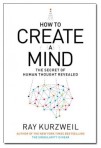 I’m reading the latest book by Ray Kurzweil — How to Create a Mind (2012). In his book Kurzweil pulls together different pieces of cutting edge brain research and puts them in the context of his own experience of developing technology for voice understanding and character recognition.
I’m reading the latest book by Ray Kurzweil — How to Create a Mind (2012). In his book Kurzweil pulls together different pieces of cutting edge brain research and puts them in the context of his own experience of developing technology for voice understanding and character recognition.
The result is the Pattern Recognition Theory of Mind, PRTM. It might seem surprisingly simple, but I must admit that I find it very attractive and plausible, bearing in mind that nature always finds clean, perfectly optimized and straight forward solutions. And the PRTM is such a solution — a highly flexible structure that is relatively easy to grow biologically but which permits an incredibly complex development of the mind.
What Kurzweil basically argues is that the main algorithm in the neocortex — the outermost layer of the mammalian brain which is most developed in the human brain and contains all higher functions — is one single algorithm with the only purpose to recognize patterns.
These pattern recognition modules — there would be a few hundred million of them in the neocortex — are then organized in a hierarchical structure where the lowest modules (in an organizational meaning, not physical as they’re all positioned in one single layer) recognize very basic pieces of patterns such as contours and small pieces of sound, and the highest represent concepts such as irony and aesthetics.
From this starting point Kurzweil elaborates the whole process of how the mind learns and develops, and he also outlines how an artificial mind could be created.
I’m confident Kurzweil is actually in a good position to move forward such a project. And here’s the thing: in the middle of December 2012 Kurzweil was hired by Google as Director of Engineering.
Given the strong engineering culture at Google, its interest for cutting edge engineering projects such as the autonomous car, I wouldn’t be surprised if Google would give the endeavor to create an artificial mind a shot, with Kurzweil in charge as director of the project.
It could be worth to note a similar but kind of opposed project — the Human Brain Project which just got financed with half a billion euros by the EU. The Human Brain Project is a remarkable venture with its roots in the Blue Brain Project led by Henry Markram at EPFL in Lausanne, Switzerland, with the scope to build a complete computer based simulation of the human brain.
The fundamental difference between the two projects is that whereas Kurzweil has a top-down approach, analyzing which are the possible algorithms that define the brain’s way of processing information and creating a computer based representation at a progressively more detailed level, The Human Brain Project’s approach is bottom-up, modelling individual neurons and their connections and eventually arriving at a complete simulation of the brain as an organ.
Both approaches will have their strengths and weaknesses, and maybe we’ll see them meet half way.
Very interesting indeed. However, more of the same will not create a mind. Some very vital knowledge necessary to make a conscious from matter (and energy?) is still missing. It is like trying to fly an aeroplane on the moon. Bigger wings will not help it to take off.